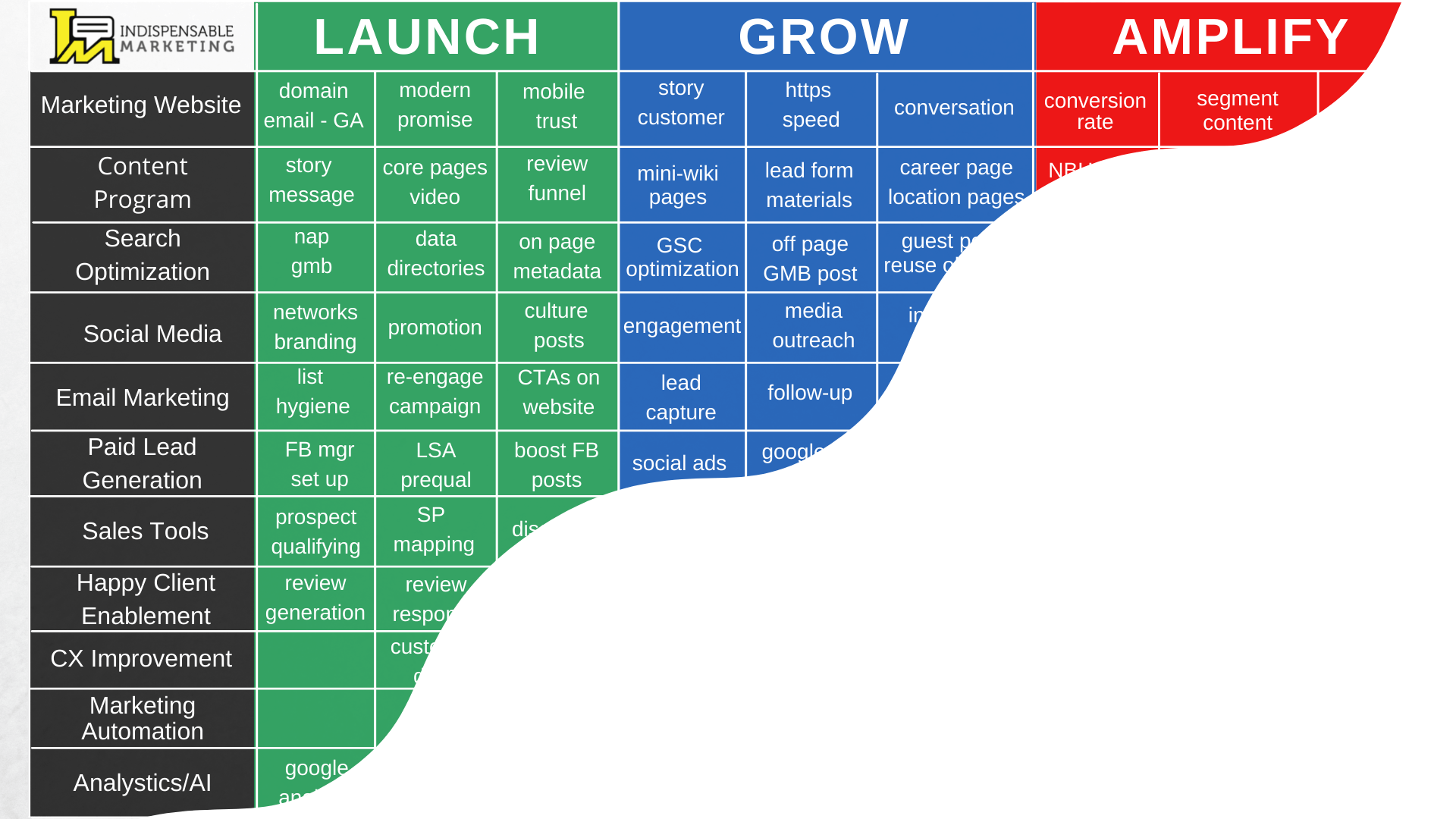How to (Properly) Build a Marketing Process With Your Agency or Service Provider
SECRET REVEALED! Most of our small business clients did not get into business to be marketers — to understand SEO meta titles, email marketing software, Facebook business manager, essential website design elements, etc.
But right out of the gate, they learn that nothing happens until they get in front of and acquire customers so marketing becomes job number one, but they don’t really like it.
With that dislike, I’ve seen so many business owners and CEOs turn over their marketing to anyone that promises results.
THIS is what really gets them in trouble and so often this approach always causes problems because SEO telemarketers, ad sales reps, web designers, social media experts, LinkedIn request automation gurus, directory agency account managers, etc. are all vying for their business.
Adding to this is the creation of one new marketing platform after another. Business owners struggle with whom to trust to guide them through the maze of marketing jargon and tactic of the week.

The LGA (Launch, Grow, Amplify) Roadmap
I’ve created something called the LGA (Launch, Grow, Amplify) roadmap based on having a marketing diagnosis before prescription.
Recently I was asked, “what do owners and CEOs of small companies need to have in place in order to make their marketing work?”
For some of you, this answer may not be surprising but for others, this will be an indispensable insight.
The absolute number one thing that needs to be in place to make marketing work is “diagnosis before prescription.”
So many business owners and CEOs that I meet mention how they read about some new widget, or go to a conference and get an email saying, “this new method or software is going to 5x them or eliminate all their headaches,” and they’re just fumbling around with the tactic of the hour.
Occasionally, some of the widgets, and software do some good but the business never builds any kind of reputation, momentum, and awareness in the market because they’re all over the place.
So doing a diagnosis before you really determine what prescriptions you’re going to take to increase visibility, build trust, and lift sales is the most important.
This ultimately allows us to guide a small business owner through the marketing puzzle starting with a solid foundation working through the maturity stages where a handful of marketing channels and existing marketing assets are being Launched, Grown, and Amplified.
The Additional Benefits
Our clients often mention that they initially come to us for customer acquisition but in addition to that, they gain clarity, confidence, and control with their marketing.
Read for yourself: How a Local Moving Company Took a Different Approach for Marketing Success
Contact Your Marketing Consultant at Indispensable Marketing
If you’re a small service based business that needs help with the building steps of a marketing process for your business or your business’s online presence on Google and other search engines, at Indispensable Marketing we can help. We offer marketing strategy consulting, marketing audits, monthly marketing packages, consultations, exploratory calls or monthly local SEO services. Contact us for more information.




